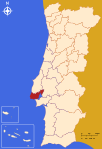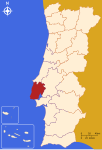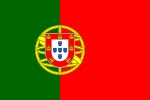25 de Abril Bridge

The 25 de Abril Bridge (Portuguese: Ponte 25 de Abril, 25th of April Bridge, Portuguese pronunciation: [ˈpõt(ɨ) ˈvĩt (i) ˈsĩku ðɨ ɐˈβɾiɫ]) is a suspension bridge connecting the city of Lisbon, capital of Portugal, to the municipality of Almada on the left (south) bank of the Tagus river. It has a total length of 2,277 metres (7,470 ft), making it the 46th longest suspension bridge in the world.From its inauguration in 6 August 1966 up to 1974, the bridge was named Salazar Bridge (Ponte Salazar), after Portuguese Prime Minister António de Oliveira Salazar, who ordered its construction. After the Carnation Revolution, which overthrew the remnants of Salazar's regime, the bridge was renamed for April 25, the date of the revolution. It is also commonly called the Tagus River Bridge (in Portuguese: Ponte sobre o Tejo = "bridge over the Tagus").Later changes had to be made due to the rapid increase in population. In the 1990s, a fifth car lane was added, and in 1999, a lower deck, used as a railway track, which was planned since the beginning, was finally built. Today, the upper deck carries six car lanes while the lower deck carries a double track railway, electrified at 25 kV AC.
Excerpt from the Wikipedia article 25 de Abril Bridge (License: CC BY-SA 3.0, Authors, Images).25 de Abril Bridge
Ponte 25 de Abril, Lisbon Alcântara (Alcântara)
Geographical coordinates (GPS) Address Nearby Places Show on map
Geographical coordinates (GPS)
| Latitude | Longitude |
|---|---|
| N 38.689166666667 ° | E -9.1769444444444 ° |
Address
Ponte 25 de Abril
Ponte 25 de Abril
1300-472 Lisbon, Alcântara (Alcântara)
Portugal
Open on Google Maps










